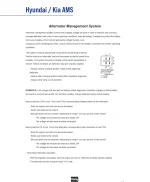rroyce46
Hasn't posted much yet...
- Joined
- Jan 28, 2018
- Messages
- 337
- Reaction score
- 125
- Points
- 43
- Location
- Calgary Canada
- Genesis Model Type
- 2G Genesis Sedan (2015-2016)
My 2016 3.8 AWD Sedan has the original Hyundai AGM battery. I'm in Calgary Canada & H9 batteries are in the $478 range for an H9 Interstate.
My car has 53000 Kilometers but was built in August 2015. Battery is fine so far but how long will it last & do I get any warning that it's failing? Our climate is cool & car is always garaged. I can get an H8 Energizer from Costco
for $299 but they don't carry an H9. H8 is 950 CCA Vs 1000 CCA for Interstate.
Will the H8 fit? Am I overthinking this & should I just wait & see when it starts to fail ?
My car has 53000 Kilometers but was built in August 2015. Battery is fine so far but how long will it last & do I get any warning that it's failing? Our climate is cool & car is always garaged. I can get an H8 Energizer from Costco
for $299 but they don't carry an H9. H8 is 950 CCA Vs 1000 CCA for Interstate.
Will the H8 fit? Am I overthinking this & should I just wait & see when it starts to fail ?










